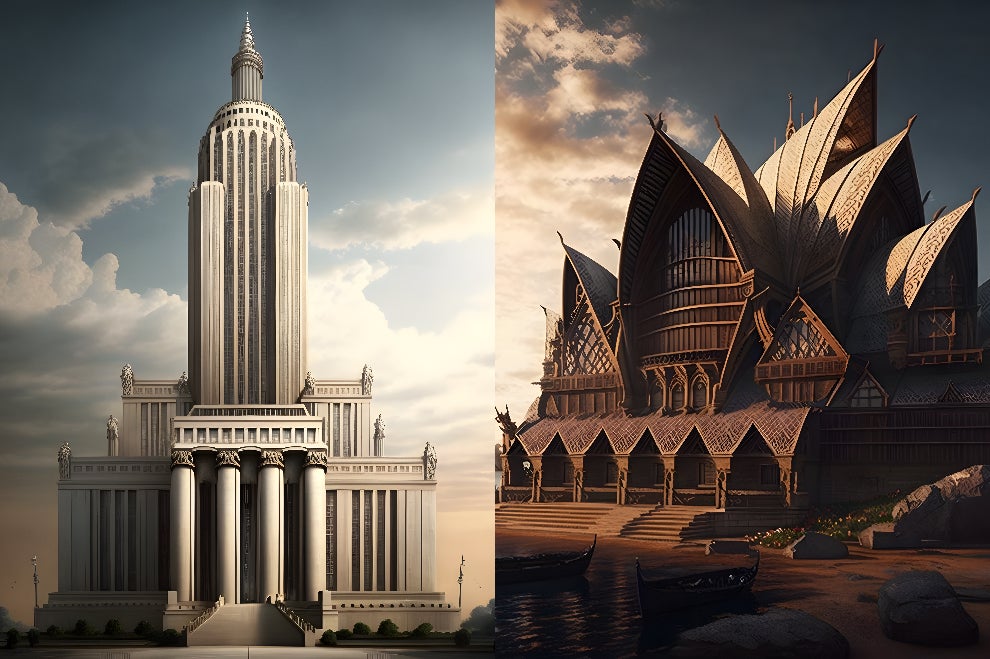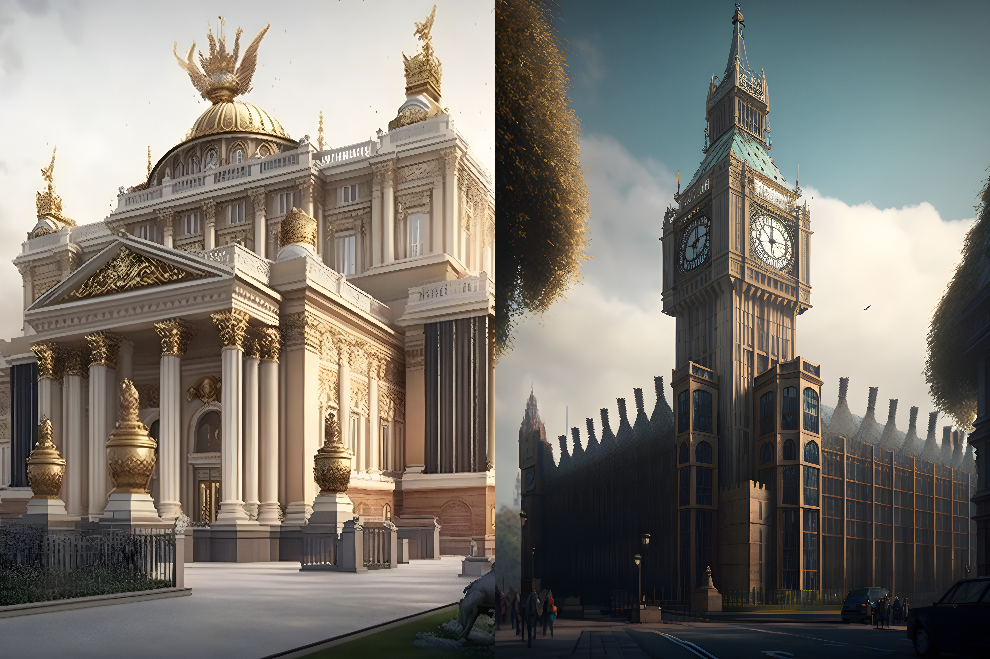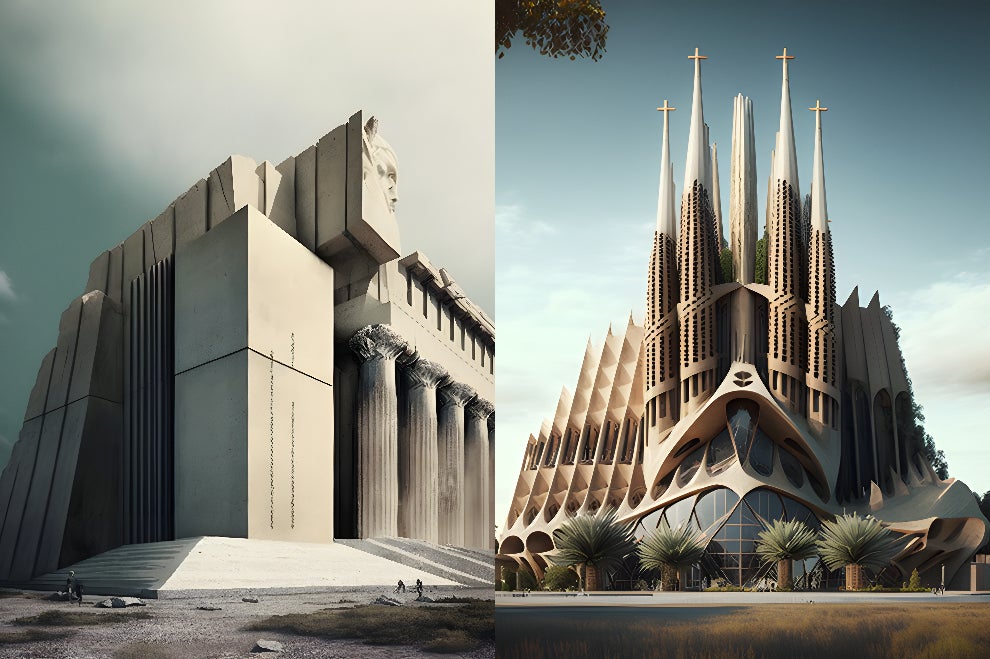Landmarks redesigned by AI with historic architectural styles, from the Empire State Building to Big Ben
Artificial intelligence shows off what a Byzantine-style Buckingham Palace might look like

Some of the world’s most famous landmarks, including the Empire State Building in New York City and Australia’s Sydney Opera House, have been given a makeover, courtesy of AI.
Recognisable structures from across the globe have been redesigned in alternative architectural styles in a project by GetAgent, an estate agent comparison site.
Researchers analysed Google search data to reveal the most-searched for architectural styles, before using the AI tool Midjourney to bring a new version of existing iconic buildings to life.
The AI system was given prompts such as: “What [building] would look like if designed in the [architecture] style, hyperrealistic, photorealism”.
The oldest of the buildings, Buckingham Palace, was built in 1703 and is known worldwide as the London residence of the British monarch. In real life, it features Baroque architecture with influences of Rococo and Neoclassical; but it’s been reimagined with a Byzantine architectural style, characterised by an added dome on top, plus marble and gold flourishes.

Elsewhere in London, Elizabeth Tower – the Gothic Revival clocktower that is home to Big Ben – has been given an industrial look, complete with exposed materials and minimalist aesthetics. The Shard, designed by famed architect Renzo Piano, has been transformed into a Renaissance structure, a style known for its use of arches, columns and symmetry.
Other buildings which saw an AI remake include the Eiffel Tower in Paris, given a Rococo architecture new look, Barcelona’s La Sagrada Familia, reimagined in Contemporary style, and the resplendent marble Parthenon temple in Athens, replaced by a Bauhaus block.
In Australia, the Sydney Opera House has seen the clock turned back more than three centuries before its construction, depicted with the half-timber work, grouped windows and steep gable roofing of Tudor architecture.

The Empire State Building, originally built with an Art Deco architectural style, has undergone a Greek Revival reimagining, characterised by a focus on symmetry and columns. The White House, designed by architect James Hoban in the Neoclassical style, was digitally rebuilt in a Victorian style with characteristic flourishes, including gabled roofs, round angles and shapely windows.
Join our commenting forum
Join thought-provoking conversations, follow other Independent readers and see their replies
Comments